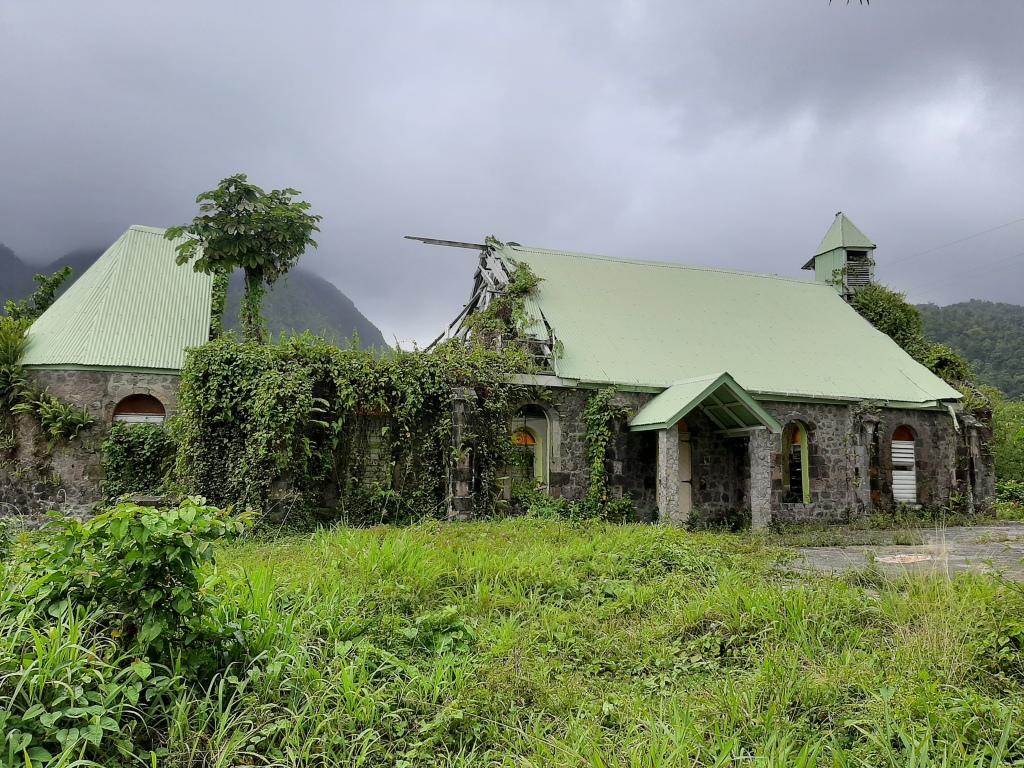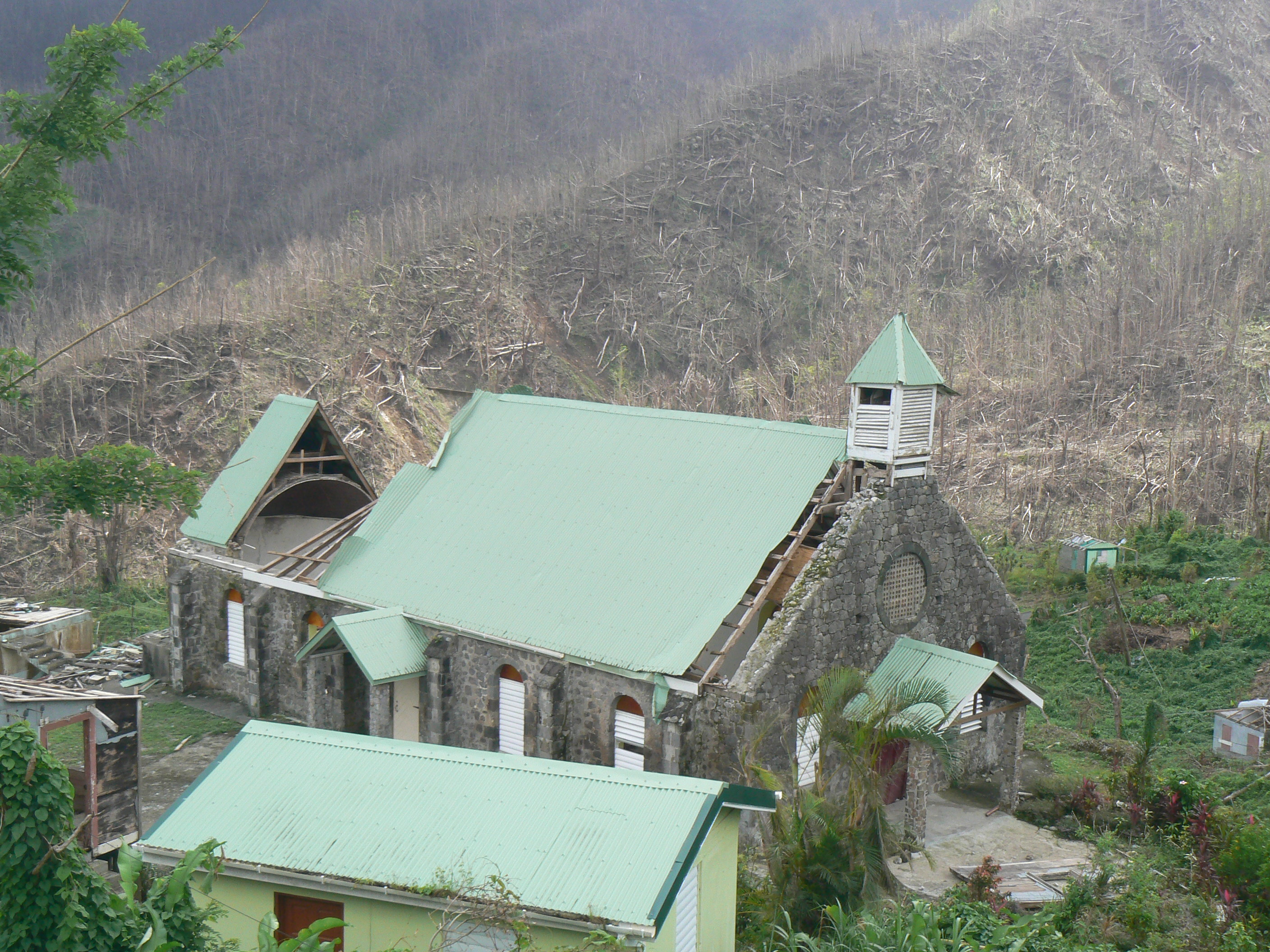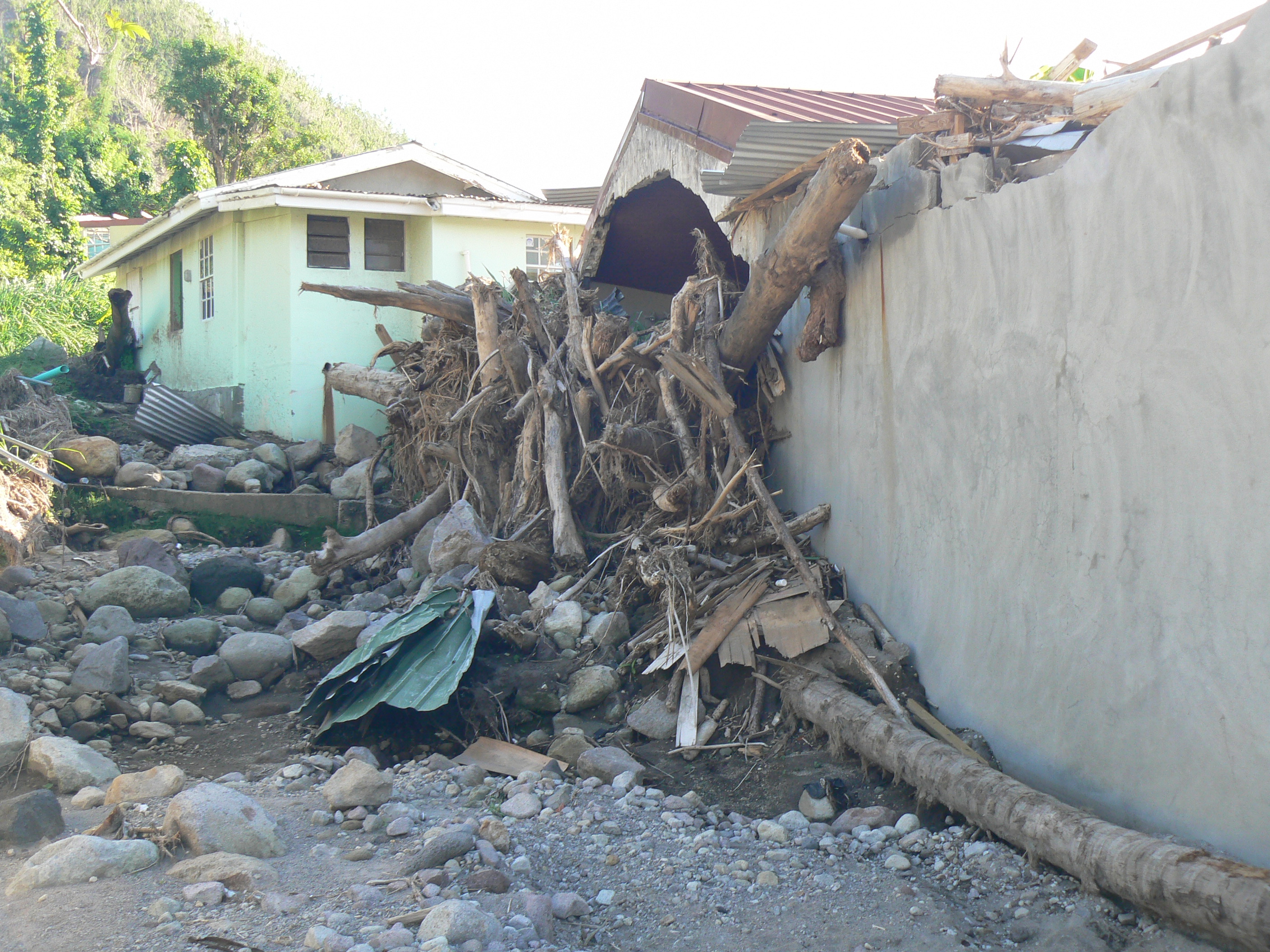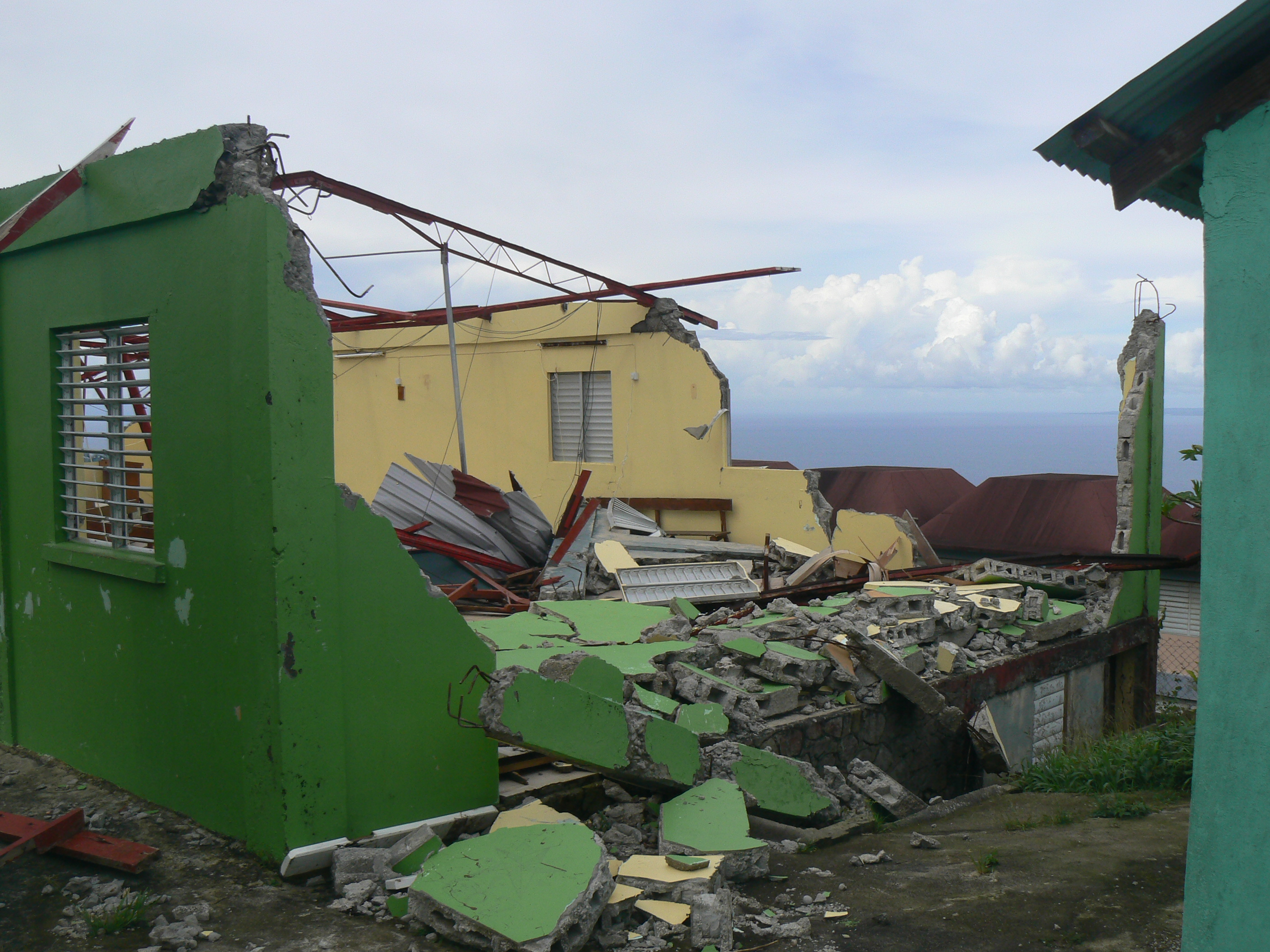
THIS MAKES ME SO SAD. THIS WAS A CHURCH WITH SO MUCH HISTORY (see my articles)



Hurricane Maria, a superior category 5 hurricane, devastated Dominica on September 18, 2017.
The following churches and chapels were severely affected :
I am creating a link named ” destroyed by hurricane MARIA 2017″







destruction of Sacred Heart chapel in LA Roche, by hurricane MARIA on September 18, 2017

SACRED HEART CHAPEL in LA ROCHE



LOUBIERE CHAPEL

The chapel at MAHAUT RIVER below


Upper Penville chapel

 On his pastoral visit in June 1860 Bishop Poirier stopped at La Roche / Victoria where he found a neat little presbytery, nearly finished, and a church under construction.
On his pastoral visit in June 1860 Bishop Poirier stopped at La Roche / Victoria where he found a neat little presbytery, nearly finished, and a church under construction.
“… the people of that quarter have done all the work without any assistance…” wrote Bishop Poirier with admiration .
The church was built while Fr. Jacques Souquieres was the resident priest in the La Plaine district. As he was such a dedicated priest , now almost forgotten, I wanted to tell you more about him.
In 1850 Fr. Souquières was “curé et aumônier de l’hospital” (parish priest and chaplain of the hospital) on the island Terre de Haut, Les Saintes. (source : LA FRANCE ECCLÉSIASTIQUE: ALMANACH DU CLERGÉ ).
Born in the Diocese of Clermont, France, Fr. Jacques Souquières came soon after his ordination as a young priest to the French Antilles.
What exactly transpired during his ministry there, I could not find out but in LES ARCHIVES NATIONAL DE FRANCE, we read that “ SOUQUIÈRES, attaché au clergé de la Guadeloupe” was fired (“Licencié” ) from his post on June 28, 1850.
Next we find him in the Register of the parishes of St. John’s and St. Andrew’s as the successor to Father Olivacce , who had to leave Portsmouth in 1850 after two years ministry because of the climate. It was actually Fr. Souquières who completed the church steeple in Portsmouth. He also attended to the St. Andrew’s Parish until the arrival of Fr. De Lettre in October 1852.
On the 10th of January 1855, shortly befor his death, Bishop Monaghan, first Bishop of Roseau, paid his first visit to Portsmouth . Fr. Jacques Souquieres had just returned from a 6 months recuperation leave in France as he was suffering with malaria fever.
Unable to bear the swampy air of Portsmouth any longer, Fr. Souquieres volunteered to move to a healthier district in Dominica.
As the Bishop was anxious to have a resident priest in the isolated area of Dominica’s east coast, he asked Fr. Souquires to take in hand the whole eastern mission. The zealous missionary accepted the invitation and on April 13, 1855 he went there as resident priest, despite suffering from repeated attacks of malaria fever.
From all records, he did all in his power to bring his parishioners nearer to God but recurrent malaria attacks left him so exhausted that he could attend only to the most urgent needs of the immense district under his care. After 4 years alone in the district, an elderly French priest, Father Allouard, was sent to La Plaine to assist him . But Fr. Allouard did not like his new post and left in the early months of 1860, after only a three months stay.
In November 1860, Fr. Souquieres became so exhausted that he had to resign his office . He left for France on May 23, 1861, broken in health, accompanied by Bishop Poirier. Hélas, too weak to travel, he died at sea on board the frigate LA SYBILLE, on the 7th of July 1861. With his death his 12 years mission to the Antilles came to an end.
Bishop Moris described him “A saintly priest , burning with zeal for the glory of God and the salvation of souls ”, who “established the parish of la Plaine on a definite footing”.
Part I by Bernard Lauwyck

“On his pastoral visit to the district in June 1860 Bishop Poirier stopped for a while at the Quanary estate to offer a prayer in the tiny chapel constructed from ruined walls, and used only for prayers and catechism. In the parochial church of La Plaine he held a Confirmation service and blessed a church bell. Then he proceeded to Victoria, and in passing visited a small chapel erected by the labourers of the Belvedere estate. At Victoria he found a neat little presbytery, nearly finished, and a church in the course of construction.
“The spot” , wrote Bishop Poirier , “is badly chosen; but as the people of that quarter have done all the work without any assistance, it is better not to interfere.”” Excerpt from the ECCLESIASTICAL BULLETIN OF ROSEAU
The “badly chosen” location refers to the church at La Roche being perched on the edge of a cliff, as it is still today.
Indeed the location has not changed but about ten year ago Fr. Vincent Esprit FMI, Parish priest of La Plaine at the time, asked me to create a side entrance/ exit. The pavement in front of the old entrance/ exit was crumbling and getting dangerously small. The old presbytery, once a beautiful wooden house, which was used for years as the DJ Convent, is today falling into ruin.
The most important information we get from Bishop Poirier is that the people of Delices-Caribe-Victoria- La Roche were building their church without help from anyone .
The church is located in an area, named after the Roche family who had an estate there. Jean Roche is listed on the John Byres map (1767-1773) as a holder of a lease of land in the parish of St. Patrick.
Cou-de-main was still very much practiced in Dominica up to a few decades ago. It is a tradition where the whole community comes together to help built a neigbour’s house or in this case their church. This church in local stonework reminds us of a period of intense faith which inspired great generosity and efforts. This is how many catholic churches were built in Dominica in past times.
While there are many stones in the neighbourhood, the stone used were cut and shaped and might have been salvaged from some ruins of a plantation factory works in the neighbourhood.
In the vicinity of the church there is an old cemetery, which was abandoned some years ago.
There was no resident priest in this isolated area of Dominica’s east coast until September 1849 . Carib- Delices-Victoria-La Roche was part of the Nord of the St. Patrick’s Parish and so is frequently mentioned in the registers of Grandbay. It was occasionally visited by priests serving Grandbay. One of these priests was Fr. L.J. Cosgrave, an irish missionary who arrived in Dominica in 1842 and was put in charge of St. David and St. Patrick- North.
The first resident priest in the area was Fr. MacNiece, an irish missionary who was stationed in Monserrat before he came to Dominica. He accepted the lonely and difficult post in September 1849, at the request of Dr. Edward Smith, parish priest of Roseau and Vicar General of the Vicar Apostolic Richard Patrick Smith of Port-of-Spain. The diocesan records state that Fr. MacNiece remained until 1852 in the area “In spite of poverty and hardships of every kind”.
He was succeeded by two Italian priests, named Paoli and Zanetlini , who each only stayed for a short time.
With the establishment of the Diocese of Roseau in 1850, its first Bishop Michael Monaghan (1850-1855) sent Father Souquieres to La Plaine to serve as resident priest. more about him in a subsequent article.